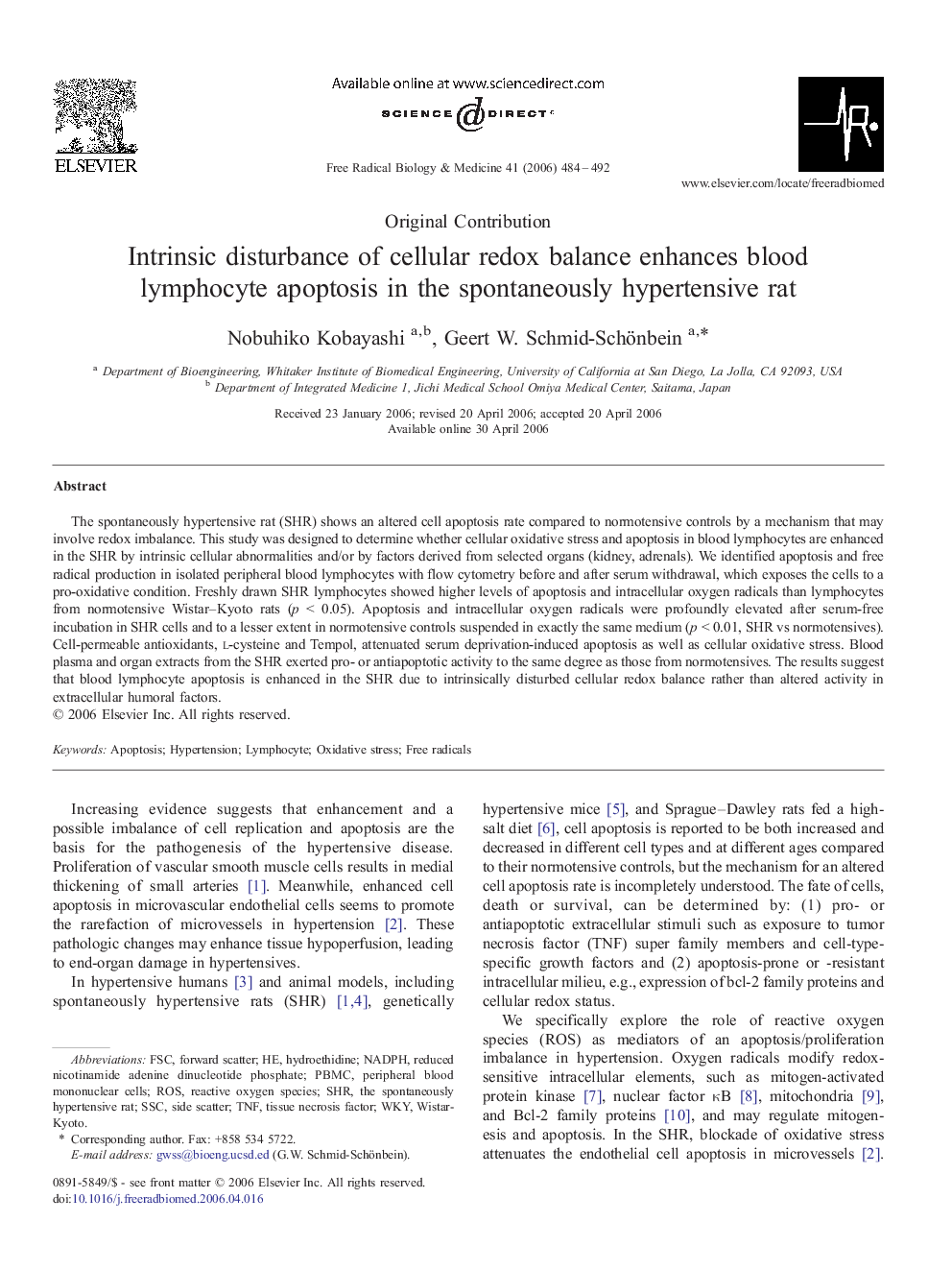| Article ID | Journal | Published Year | Pages | File Type |
|---|---|---|---|---|
| 1911337 | Free Radical Biology and Medicine | 2006 | 9 Pages |
Abstract
The spontaneously hypertensive rat (SHR) shows an altered cell apoptosis rate compared to normotensive controls by a mechanism that may involve redox imbalance. This study was designed to determine whether cellular oxidative stress and apoptosis in blood lymphocytes are enhanced in the SHR by intrinsic cellular abnormalities and/or by factors derived from selected organs (kidney, adrenals). We identified apoptosis and free radical production in isolated peripheral blood lymphocytes with flow cytometry before and after serum withdrawal, which exposes the cells to a pro-oxidative condition. Freshly drawn SHR lymphocytes showed higher levels of apoptosis and intracellular oxygen radicals than lymphocytes from normotensive Wistar-Kyoto rats (p < 0.05). Apoptosis and intracellular oxygen radicals were profoundly elevated after serum-free incubation in SHR cells and to a lesser extent in normotensive controls suspended in exactly the same medium (p < 0.01, SHR vs normotensives). Cell-permeable antioxidants, l-cysteine and Tempol, attenuated serum deprivation-induced apoptosis as well as cellular oxidative stress. Blood plasma and organ extracts from the SHR exerted pro- or antiapoptotic activity to the same degree as those from normotensives. The results suggest that blood lymphocyte apoptosis is enhanced in the SHR due to intrinsically disturbed cellular redox balance rather than altered activity in extracellular humoral factors.
Keywords
Related Topics
Life Sciences
Biochemistry, Genetics and Molecular Biology
Ageing
Authors
Nobuhiko Kobayashi, Geert W. Schmid-Schönbein,
